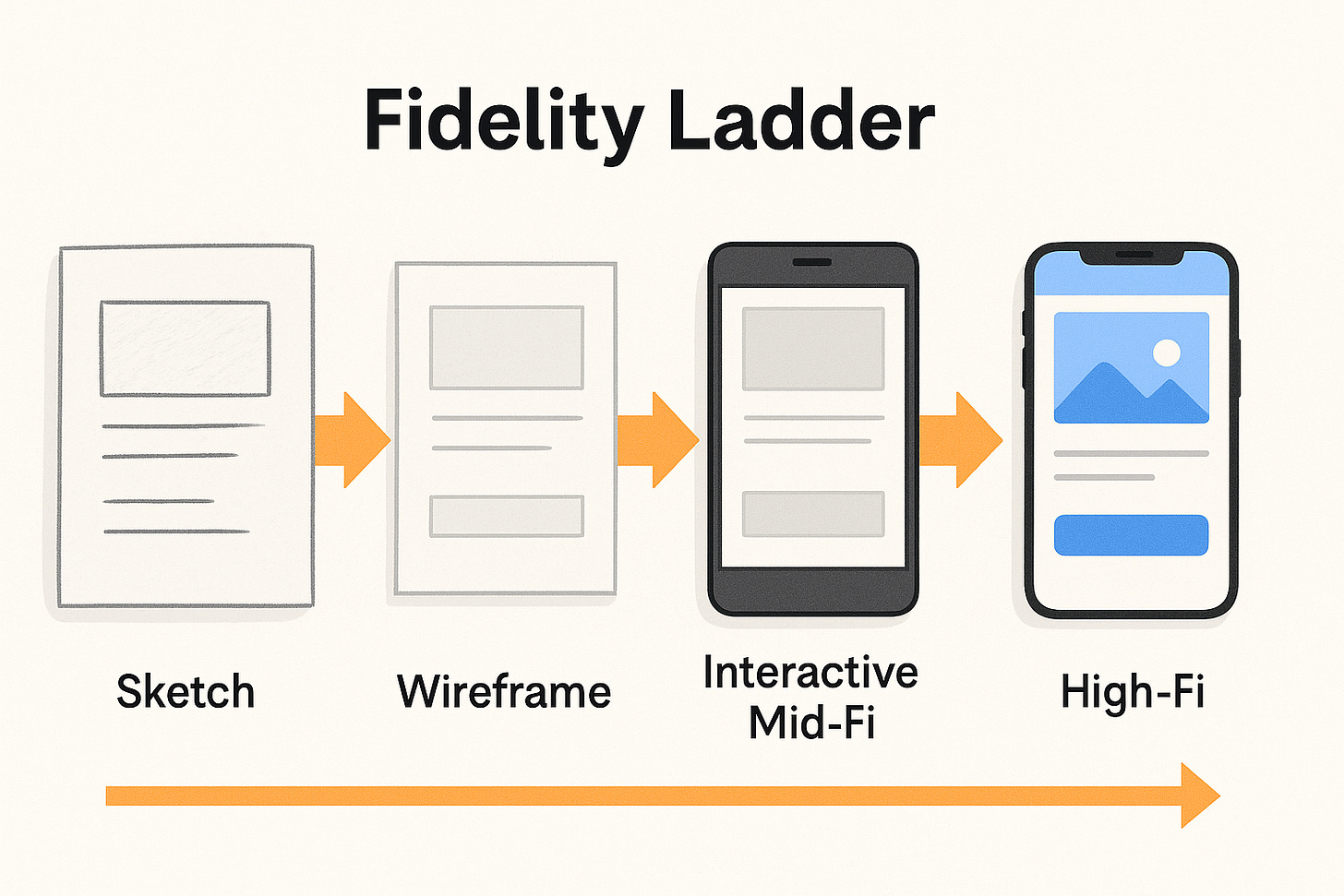How to Prototype Faster (Without Sacrificing Depth)
Balancing speed with insight in 2025 workflows.
Prototyping has always been a balancing act. Move too slowly and the product team passes you by. Move too fast and you risk building shallow prototypes that don’t reveal the deeper issues.
The question isn’t low-fidelity or high-fidelity. The real question is when to use which - and how to move between them without losing momentum.
In This Issue
The Purpose of Prototyping: More Than Pretty Screens
Low-Fidelity Prototypes: Speed, Clarity, and Early Feedback
High-Fidelity Prototypes: Depth, Realism, and Usability Proof
The Trade-Offs: Where Teams Get It Wrong
A Step-by-Step Framework for Faster Prototyping
Tools and Shortcuts That Save Time
UXCON25 Spotlight: Prototyping at Scale
Resource Corner
The Purpose of Prototyping: More Than Pretty Screens
Prototypes aren’t deliverables - they’re decision-making tools.
For teams: they align understanding and direction.
For users: they reveal whether the idea works in practice.
For stakeholders: they reduce risk by testing before building.
The key is not how polished they look but what question they answer.
Low-Fidelity Prototypes: Speed, Clarity, and Early Feedback
Low-fi prototypes are quick sketches, wireframes, or clickable boxes that test concepts.
Strengths:
Fast to create and change.
Easy for stakeholders to give directional feedback (“yes/no,” “move this here”).
Encourage exploration without attachment.
Limitations:
Don’t capture details like flow, timing, or interactions.
Users sometimes struggle to imagine the final product from rough sketches.
High-Fidelity Prototypes: Depth, Realism, and Usability Proof
High-fi prototypes look and feel close to the final product. They’re great for testing usability, interaction, and emotional response.
Strengths:
Capture realistic flows (loading states, micro-copy, animations).
Give stakeholders confidence that “this is real.”
Identify friction you can’t spot in low-fi.
Limitations:
Slower to build and harder to change.
Risk of premature polish, teams may mistake them for “final.”
The Trade-Offs: Where Teams Get It Wrong
Starting too polished: Spending weeks perfecting before testing direction.
Staying too rough: Never validating usability details until it’s too late.
Mixing signals: Using high-fi for early ideas, which locks stakeholders into the wrong path.
The goal is not to pick one, but to stage fidelity strategically.
A Step-by-Step Framework for Faster Prototyping
Frame the question: What do you need to learn?
Concept? → Low-fi.
Flow? → Mid-fi.
Usability? → High-fi.
Prototype only the flow you’re testing. Don’t design the entire app — just the journey.
Validate with 3–5 users. Even a handful can reveal friction.
Refine fidelity as confidence grows. Move from rough sketches → clickable wireframes → polished flows.
Document learnings, not just screens. What did this prototype prove? What’s still open?
Tools and Shortcuts That Save Time
Figma auto-layout + component libraries → cut hours off iteration.
AI-assisted mockups (e.g., Figma Make, Uizard, Galileo AI) → generate drafts, then refine.
Prototyping plugins (like Anima or ProtoPie) → add interactivity fast.
Use templates, not blank canvases → 80% done before you start.
🚨 10 Days to UXCON25
We’re down to the final countdown.
In just 10 DAYS, you could be:
Hearing from Kevin Liang on the future of UX roles
Learning from Jeremy Miller on how to thrive in ambiguity
Picking up leadership frameworks with Calvin Robertson
Building real connections with Jen Blatz and 400+ UXers in the room
Talking directly with recruiters and hiring managers
Don’t Miss this.
🎟️ October 9. One day. One community. Your chance to connect for real.
Resource Corner
Final Thought
Faster prototyping doesn’t mean shallower design. It means asking sharper questions and matching fidelity to the stage of learning.
The purpose of a prototype isn’t to look impressive, it’s to test ideas. A “good” prototype isn’t the one with the most polish or perfect visuals. It’s the one that helps you and your stakeholders quickly answer the right question at the right time.
Tell us…….
Also……..
Thinking back on your last project: where did prototyping slow you down? At layout, alignment, copy, wiring links, or states? Has AI helped address those friction points — without losing your own critical thinking?






